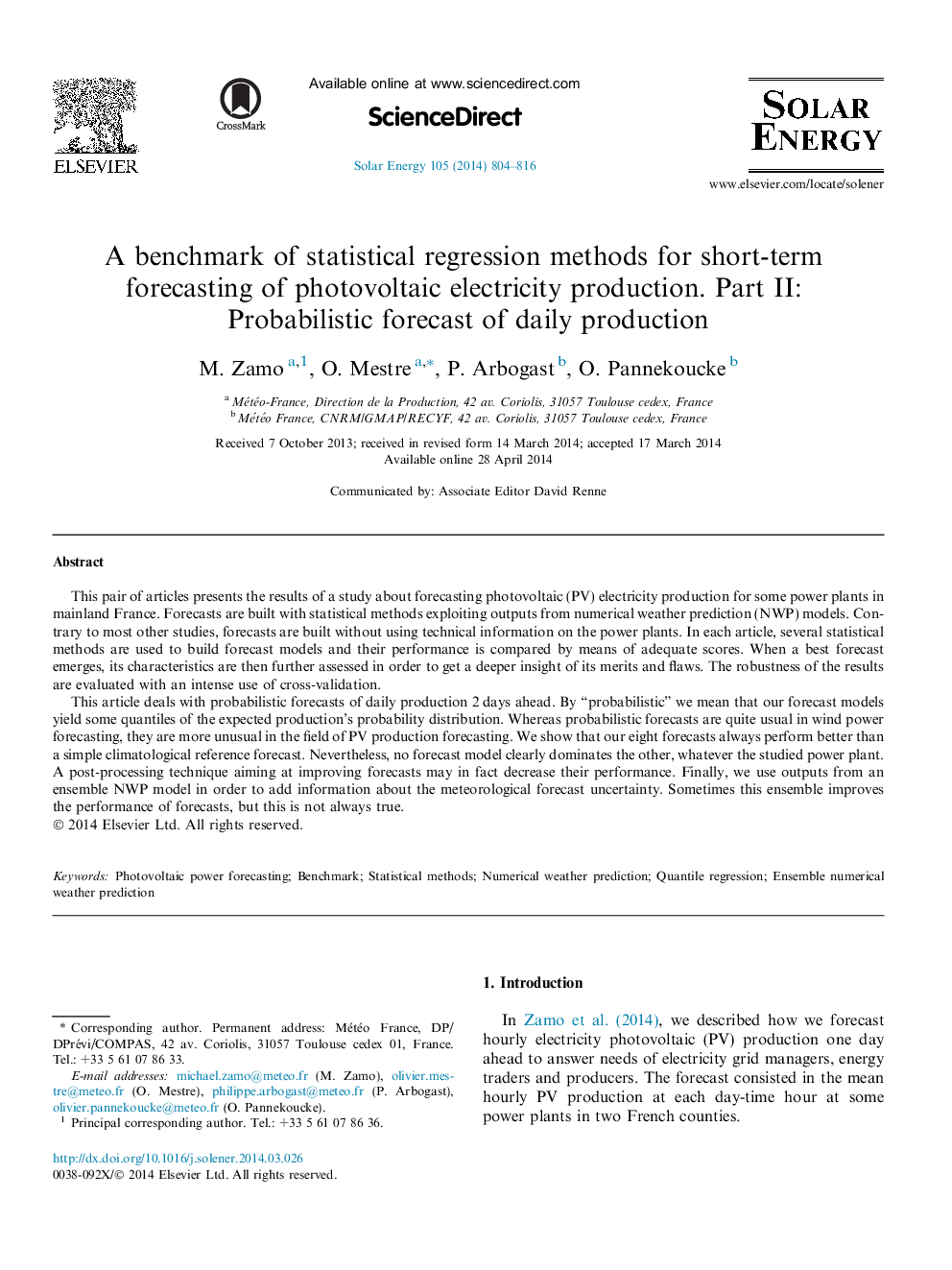| کد مقاله | کد نشریه | سال انتشار | مقاله انگلیسی | نسخه تمام متن |
|---|---|---|---|---|
| 1550096 | 1513113 | 2014 | 13 صفحه PDF | دانلود رایگان |
• We benchmark eight forecasting methods for daily PV electricity production.
• Forecasts are built with statistical methods only.
• Predictors from an ensemble numerical weather prediction system is used.
• Every forecast method performs better than a climatological forecast.
• No forecast clearly dominates the other whatever the power plant.
This pair of articles presents the results of a study about forecasting photovoltaic (PV) electricity production for some power plants in mainland France. Forecasts are built with statistical methods exploiting outputs from numerical weather prediction (NWP) models. Contrary to most other studies, forecasts are built without using technical information on the power plants. In each article, several statistical methods are used to build forecast models and their performance is compared by means of adequate scores. When a best forecast emerges, its characteristics are then further assessed in order to get a deeper insight of its merits and flaws. The robustness of the results are evaluated with an intense use of cross-validation.This article deals with probabilistic forecasts of daily production 2 days ahead. By “probabilistic” we mean that our forecast models yield some quantiles of the expected production’s probability distribution. Whereas probabilistic forecasts are quite usual in wind power forecasting, they are more unusual in the field of PV production forecasting. We show that our eight forecasts always perform better than a simple climatological reference forecast. Nevertheless, no forecast model clearly dominates the other, whatever the studied power plant. A post-processing technique aiming at improving forecasts may in fact decrease their performance. Finally, we use outputs from an ensemble NWP model in order to add information about the meteorological forecast uncertainty. Sometimes this ensemble improves the performance of forecasts, but this is not always true.
Journal: Solar Energy - Volume 105, July 2014, Pages 804–816
